Efficient Near-Field Radiofrequency Imaging of Impact Damage on CFRP Materials with Learning-Based Compressed Sensing
Abstract
:1. Introduction
- This paper brings in a learning-based CS method for CFRP impact damage detection in NRI, which is 20 times faster than existing methods under the same imaging quality.
- The proposed learning-based CS method brings in a de-nosing ability during RF imaging, which can remove incorrect data in scanning that is extremely hard for traditional methods.
- Instead of being in a black-box as existing deep learning-based CS reconstruction is, the results of the proposed learning-based CS can be anticipated, which is more reliable for sensing applications.
- The proposed method is a plugin method which does not need hardware modification and can be extended to other scanning-based characterization systems.
2. Theoretical Basis of NRI for Impact Damage Detection on CFRP Materials
2.1. Near-Field Radiofrequency Imaging for NDT
2.2. The CFRP Materials for Case Studies
3. The Proposed Learning-Based Compressed Sensing
3.1. Compressed Sensing Theory and Measurement Matrix Design in NRI
| Algorithm 1. Measurement matrix for NRI systems. |
| Input:m, n Initial:, m = 1 to m; n = random permutate 1 to n Iteration I = 1 to m with step-size 1: Output: |
3.2. The Proposed Deep Learning-Based CS Reconstruction
4. Experimental Results & Discussions
4.1. Settings
4.1.1. Implementation Steps
4.1.2. Experimental Setups
4.1.3. Configuration for Neural-Network Training
4.2. Accuracy Analysis
4.3. Efficiency Analysis
5. Conclusions & Future Works
Author Contributions
Funding
Institutional Review Board Statement
Informed Consent Statement
Data Availability Statement
Conflicts of Interest
References
- Karataş, M.A.; Gökkaya, H. A review on machinability of carbon fiber reinforced polymer (CFRP) and glass fiber reinforced polymer (GFRP) composite materials. Def. Technol. 2018, 14, 318–326. [Google Scholar] [CrossRef]
- Alemour, B.; Badran, O.; Hassan, M. A Review of Using Conductive Composite Materials in Solving Lightening Strike and Ice Accumulation Problems in Aviation. J. Aerosp. Technol. Manag. 2019, 11, e1919. [Google Scholar] [CrossRef]
- Brown, S.; Robert, C.; Koutsos, V.; Ray, D. Methods of modifying through-thickness electrical conductivity of CFRP for use in structural health monitoring, and its effect on mechanical properties—A review. Compos. Part A 2020, 133, 105885. [Google Scholar] [CrossRef]
- Shi, Y.; Pinna, C.; Soutis, C. Impact Damage Characteristics of Carbon Fibre Metal Laminates: Experiments and Simulation. Appl. Compos. Mater. 2020, 27, 511–531. [Google Scholar] [CrossRef]
- Maier, A.; Schmidt, R.; Oswald-Tranta, B.; Schledjewski, R. Non-destructive thermography analysis of impact damage on large-scale CFRP automotive parts. Materials 2014, 7, 413–429. [Google Scholar] [CrossRef]
- He, Y.; Tian, G.; Pan, M.; Chen, D. Impact evaluation in carbon fiber reinforced plastic (CFRP) laminates using eddy current pulsed thermography. Compos. Struct. 2014, 109, 1–7. [Google Scholar] [CrossRef]
- Amenabar, I.; Mendikute, A.; López-Arraiza, A.; Lizaranzu, M.; Aurrekoetxea, J. Comparison and analysis of non-destructive testing techniques suitable for delamination inspection in wind turbine blades. Compos. Part B 2011, 42, 1298–1305. [Google Scholar] [CrossRef]
- Li, Z.; Meng, Z. A Review of the Radio Frequency Non-destructive Testing for Carbon-fibre Composites. Meas. Sci. Rev. 2016, 16, 68–76. [Google Scholar] [CrossRef]
- Heuer, H.; Schulze, M.; Pooch, M.; Gäbler, S.; Nocke, A.; Bardl, G.; Cherif, C.; Klein, M.; Kupke, R.; Vetter, R.; et al. Review on quality assurance along the CFRP value chain—Non-destructive testing of fabrics, preforms and CFRP by HF radio wave techniques. Compos. Part B 2015, 77, 494–501. [Google Scholar] [CrossRef]
- Li, Z.; Haigh, A.; Soutis, C.; Gibson, A. Principles and applications of microwave testing for woven and non-woven carbon fibre-reinforced polymer composites: A topical review. Appl. Compos. Mater. 2018, 25, 965–982. [Google Scholar] [CrossRef]
- Li, Z.; Wang, P.; Haigh, A.; Soutis, C.; Gibson, A. Review of microwave techniques used in the manufacture and fault detection of aircraft composites. Aeronaut. J. 2021, 125, 151–179. [Google Scholar] [CrossRef]
- Ni, Q.-Q.; Hong, J.; Xu, P.; Xu, Z.; Khvostunkov, K.; Xia, H. Damage detection of CFRP composites by electromagnetic wave nondestructive testing (EMW-NDT). Compos. Sci. Technol. 2021, 210, 108839. [Google Scholar] [CrossRef]
- Li, Z.; Meng, Z.; Fei, F.; Chen, Z. Microwave cavity resonator sensor with an octagonal cross section for thickness measurement of coatings on carbon fibre composites. NDT E Int. 2022, 130, 102680. [Google Scholar] [CrossRef]
- He, S.; He, J.; Guo, X.; Ueda, T.; Wang, Y. Detection of CFRP-concrete interfacial defects by using electrical measurement. Compos. Struct. 2022, 295, 115843. [Google Scholar] [CrossRef]
- Islam, M.A.; Kharkovsky, S. Detection and monitoring of gap in concrete-based composite structures using microwave dual waveguide sensor. IEEE Sens. J. 2016, 17, 986–993. [Google Scholar] [CrossRef]
- Lei, X.; Yang, X.; Chen, J.; Xiao, H.; Zhang, J.; Wang, Y.; Yuan, J.; Zhu, Z. Detection of internal defects in metal fibre composite materials using double-waveguide probe loaded with split-ring resonators. Meas. Sci. Technol. 2019, 30, 125013. [Google Scholar] [CrossRef]
- Yang, X.; Li, W.; Lu, P.; Liu, Q.; Zou, Y.; Xie, Y.; Song, C.; Qiu, Y. Near-Field Bessel-Gauss Antenna for Nonmetal Internal Defects Detection. IEEE Antennas Wirel. Propag. Lett. 2021, 20, 2466–2470. [Google Scholar] [CrossRef]
- Li, Z.; Haigh, A.D.; Saleh, M.N.; McCarthy, E.D.; Soutis, C.; Gibson, A.A.; Sloan, R. Detection of impact damage in carbon fiber composites using an electromagnetic sensor. Res. Nondestruct. Eval. 2018, 29, 123–142. [Google Scholar] [CrossRef]
- Salski, B.; Gwarek, W.; Korpas, P.; Reszewicz, S.; Chong, A.Y.B.; Theodorakeas, P.; Hatziioannidis, I.; Kappatos, V.; Selcuk, C.; Gan, T.-H.; et al. Non-destructive testing of carbon-fibre-reinforced polymer materials with a radio-frequency inductive sensor. Compos. Struct. 2015, 122, 104–112. [Google Scholar] [CrossRef]
- Sutthaweekul, R.; Marindra, A.M.J.; Tian, G.Y. Study of microwave responses on layered woven CFRP composites. In Proceedings of the 2017 9th International Conference on Information Technology and Electrical Engineering (ICITEE), Phuket, Thailand, 12–13 October 2017; pp. 1–5. [Google Scholar]
- Gao, B.; Woo, W.L.; Tian, G.Y.; Zhang, H. Unsupervised Diagnostic and Monitoring of Defects Using Waveguide Imaging with Adaptive Sparse Representation. IEEE Trans. Ind. Inform. 2016, 12, 405–416. [Google Scholar] [CrossRef]
- Yang, S.-H.; Kim, K.-B.; Oh, H.G.; Kang, J.-S. Non-contact detection of impact damage in CFRP composites using millimeter-wave reflection and considering carbon fiber direction. NDT E Int. 2013, 57, 45–51. [Google Scholar] [CrossRef]
- Li, Z.; Haigh, A.; Soutis, C.; Gibson, A. X-band microwave characterisation and analysis of carbon fibre-reinforced polymer composites. Compos. Struct. 2019, 208, 224–232. [Google Scholar] [CrossRef]
- Dong, J.; Locquet, A.; Declercq, N.F.; Citrin, D.S. Polarization-resolved terahertz imaging of intra- and inter-laminar damages in hybrid fiber-reinforced composite laminate subject to low-velocity impact. Compos. Part B 2016, 92, 167–174. [Google Scholar] [CrossRef]
- Navagato, M.D.; Narayanan, R.M. Application of microwave noiselets for nondestructive testing of unidirectional carbon fiber reinforced polymers. In Proceedings of the Radar Sensor Technology XXIII, Baltimore, MD, USA, 15–17 April 2019; pp. 324–333. [Google Scholar]
- Yuan, S.; Ren, Y.; Qiu, L.; Mei, H. A Multi-Response-Based Wireless Impact Monitoring Network for Aircraft Composite Structures. IEEE Trans. Ind. Electron. 2016, 63, 7712–7722. [Google Scholar] [CrossRef]
- Tang, C.; Tian, G.Y.; Li, K.; Sutthaweekul, R.; Wu, J. Smart Compressed Sensing for Online Evaluation of CFRP Structure Integrity. IEEE Trans. Ind. Electron. 2017, 64, 9608–9617. [Google Scholar] [CrossRef]
- Tang, C.; Tian, G.; Boussakta, S.; Wu, J. Feature-Supervised Compressed Sensing for Microwave Imaging Systems. IEEE Trans. Instrum. Meas. 2020, 69, 5287–5297. [Google Scholar] [CrossRef]
- Tang, C.; Tian, G.Y.; Wu, J. Segmentation-oriented Compressed Sensing for Efficient Impact Damage Detection on CFRP Materials. IEEE ASME Trans. Mechatron. 2021, 26, 2528–2537. [Google Scholar] [CrossRef]
- Candès, E.J.; Romberg, J.; Tao, T. Robust uncertainty principles: Exact signal reconstruction from highly incomplete frequency information. IEEE Trans. Inf. Theory 2006, 52, 489–509. [Google Scholar] [CrossRef]
- Qaisar, S.; Bilal, R.M.; Iqbal, W.; Naureen, M.; Lee, S. Compressive sensing: From theory to applications, a survey. J. Commun. Netw. 2013, 15, 443–456. [Google Scholar] [CrossRef]
- Majumdar, A.; Ward, R.K.; Aboulnasr, T. Compressed sensing based real-time dynamic MRI reconstruction. IEEE Trans. Med. Imaging 2012, 31, 2253–2266. [Google Scholar] [CrossRef]
- Cetin, M.; Stojanovic, I.; Onhon, O.; Varshney, K.; Samadi, S.; Karl, W.C.; Willsky, A.S. Sparsity-Driven Synthetic Aperture Radar Imaging: Reconstruction, autofocusing, moving targets, and compressed sensing. IEEE Signal Process. Mag. 2014, 31, 27–40. [Google Scholar] [CrossRef]
- Lohit, S.; Kulkarni, K.; Kerviche, R.; Turaga, P.; Ashok, A. Convolutional Neural Networks for Noniterative Reconstruction of Compressively Sensed Images. IEEE Trans. Comput. Imaging 2018, 4, 326–340. [Google Scholar] [CrossRef]
- Shi, W.; Liu, S.; Jiang, F.; Zhao, D. Video Compressed Sensing Using a Convolutional Neural Network. IEEE Trans. Circuits Syst. Video Technol. 2021, 31, 425–438. [Google Scholar] [CrossRef]
- Shrifan, N.H.; Akbar, M.F.; Isa, N.A.M. Prospect of using artificial intelligence for microwave nondestructive testing technique: A review. IEEE Access 2019, 7, 110628–110650. [Google Scholar] [CrossRef]
- Tropp, J.A.; Gilbert, A.C. Signal recovery from random measurements via orthogonal matching pursuit. IEEE Trans. Inf. Theory 2007, 53, 4655–4666. [Google Scholar] [CrossRef]
- Blumensath, T.; Davies, M.E. Normalized iterative hard thresholding: Guaranteed stability and performance. IEEE J. Sel. Top. Signal Process. 2010, 4, 298–309. [Google Scholar] [CrossRef]
- Zhang, J.; Ghanem, B. ISTA-Net: Interpretable optimization-inspired deep network for image compressive sensing. In Proceedings of the IEEE Conference on Computer Vision and Pattern Recognition, Salt Lake City, UT, USA, 18–23 June 2018; pp. 1828–1837. [Google Scholar]
- Zhang, Z.; Liu, Y.; Liu, J.; Wen, F.; Zhu, C. AMP-Net: Denoising-based deep unfolding for compressive image sensing. IEEE Trans. Image Process. 2020, 30, 1487–1500. [Google Scholar] [CrossRef]
- You, D.; Xie, J.; Zhang, J. ISTA-Net++: Flexible deep unfolding network for compressive sensing. In Proceedings of the 2021 IEEE International Conference on Multimedia and Expo (ICME), Shenzhen, China, 5–9 July 2021; pp. 1–6. [Google Scholar]
- Hu, S.-W.; Lin, G.-X.; Lu, C.-S. GPX-ADMM-Net: Interpretable Deep Neural Network for Image Compressive Sensing. IEEE Access 2021, 9, 158695–158709. [Google Scholar] [CrossRef]
- Song, H.; Wang, Z.; Zeng, Y.; Guo, X.; Tang, C. Toward reliable sparse reconstruction deep neural network for compressed sensing. IEEE Trans. Comput. Imaging 2022, 1–10. [Google Scholar]
- Küng, R.; Jung, P. Robust nonnegative sparse recovery and 0/1-Bernoulli measurements. In Proceedings of the 2016 IEEE Information Theory Workshop (ITW), Cambridge, UK, 11–14 September 2016; pp. 260–264. [Google Scholar]
- Candes, E.J.; Romberg, J.K.; Tao, T. Stable signal recovery from incomplete and inaccurate measurements. Commun. Pure Appl. Math. 2006, 59, 1207–1223. [Google Scholar] [CrossRef]
- Stanković, S.; Orović, I. An approach to 2D signals recovering in compressive sensing context. Circuits Syst. Signal Process. 2017, 36, 1700–1713. [Google Scholar] [CrossRef] [Green Version]
- Arjoune, Y.; Kaabouch, N.; El Ghazi, H.; Tamtaoui, A. A performance comparison of measurement matrices in compressive sensing. Int. J. Commun. Syst. 2018, 31, e3576. [Google Scholar] [CrossRef]
- Musić, J.; Orović, I.; Marasović, T.; Papić, V.; Stanković, S. Gradient compressive sensing for image data reduction in UAV based search and rescue in the wild. Math. Probl. Eng. 2016, 2016, 6827414. [Google Scholar] [CrossRef] [Green Version]
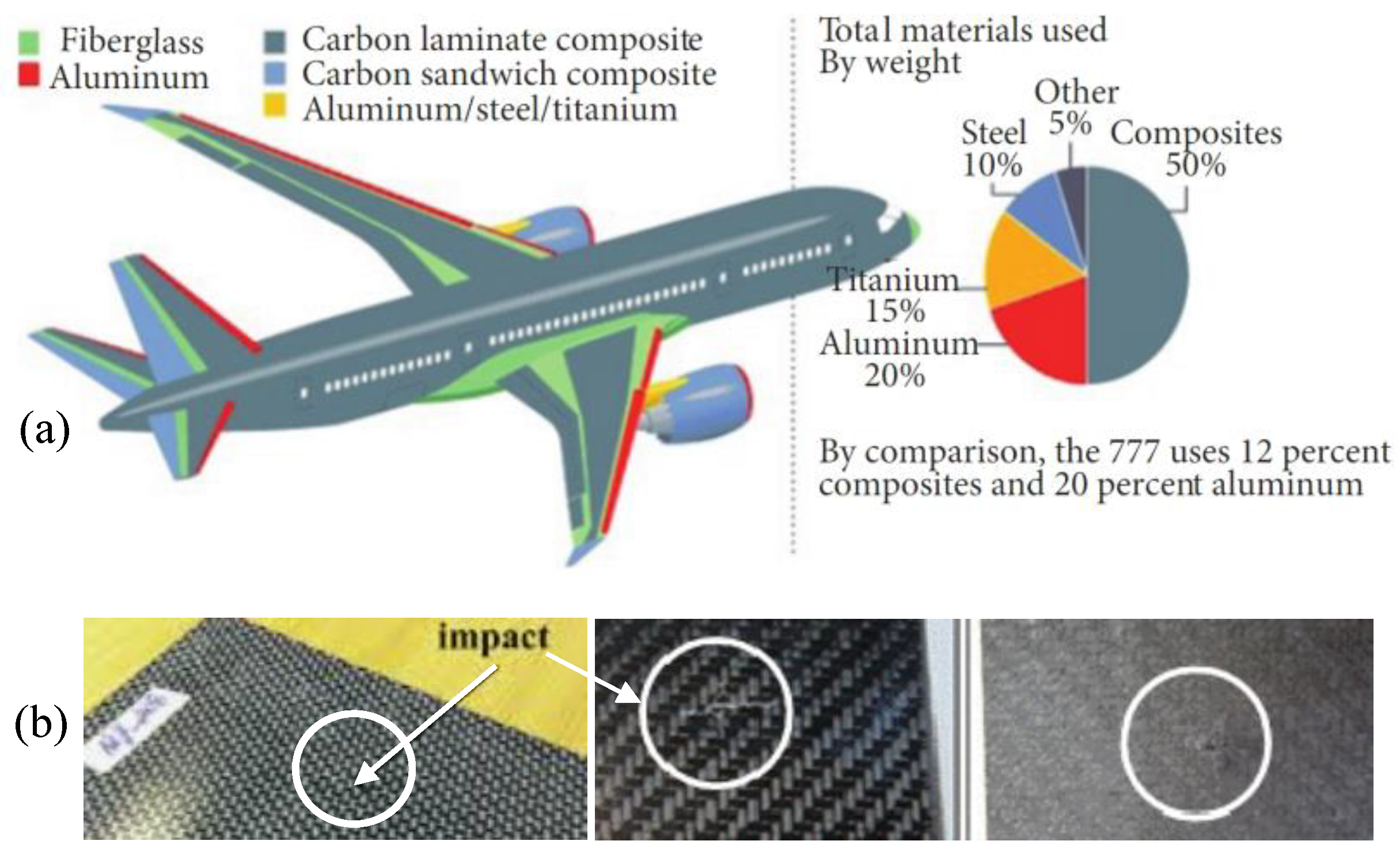
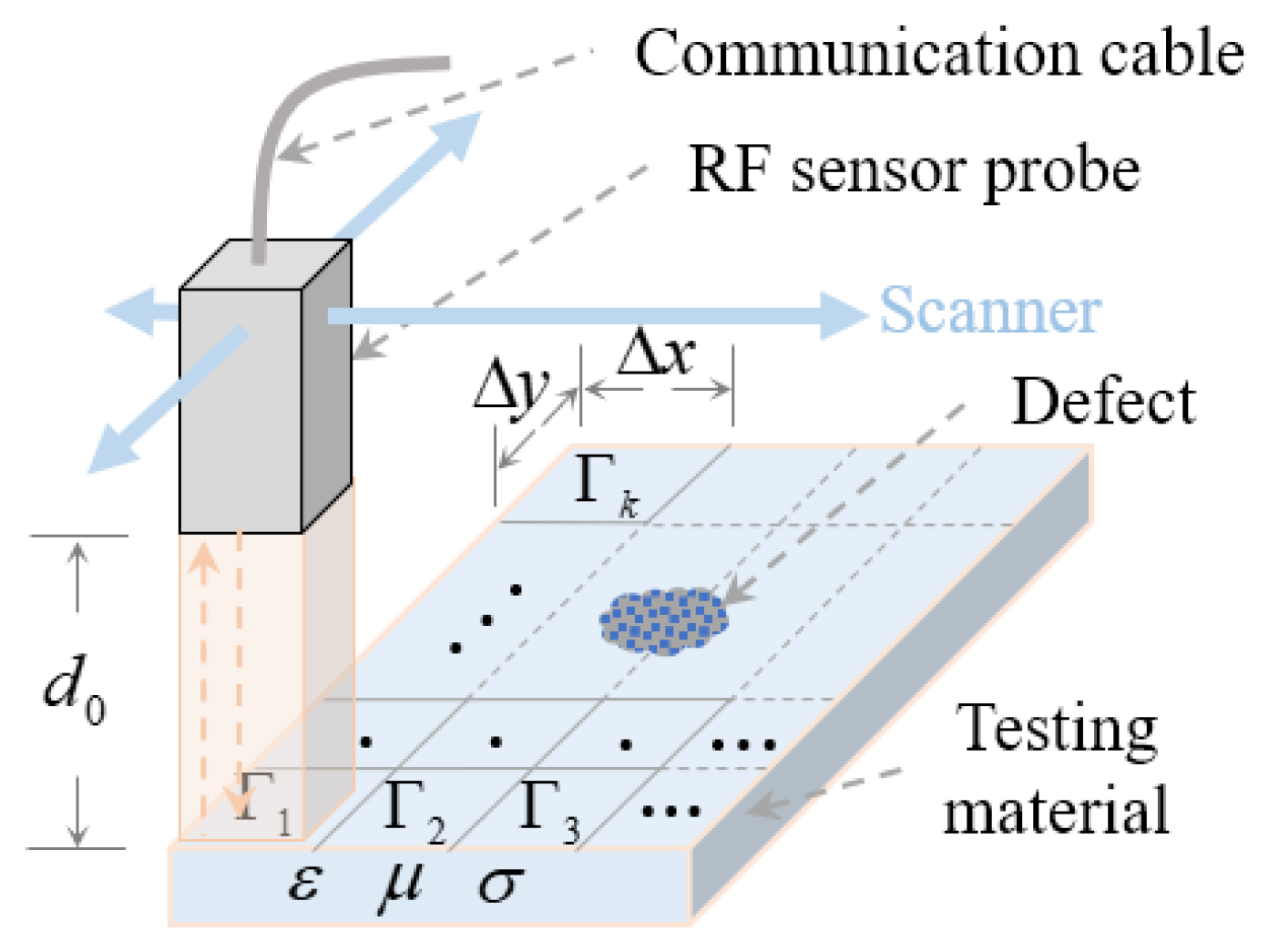

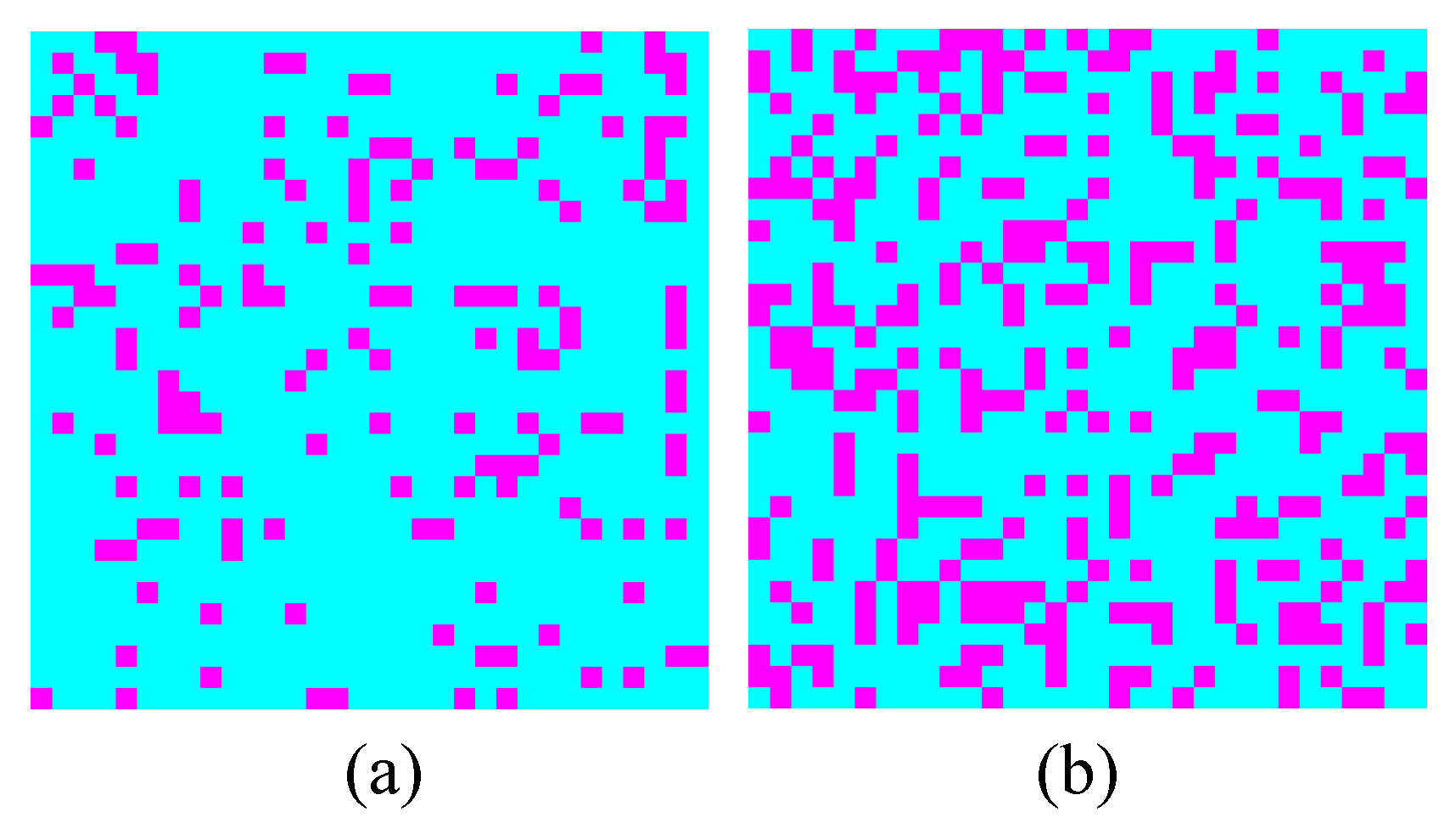

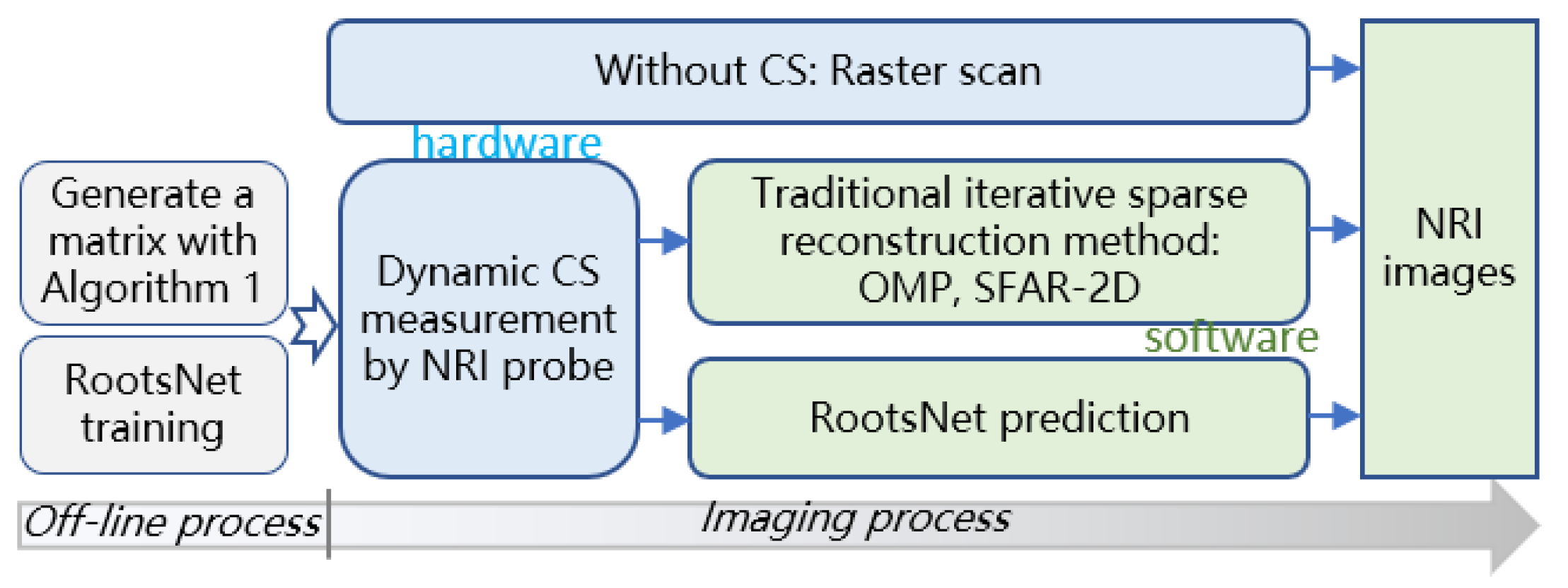
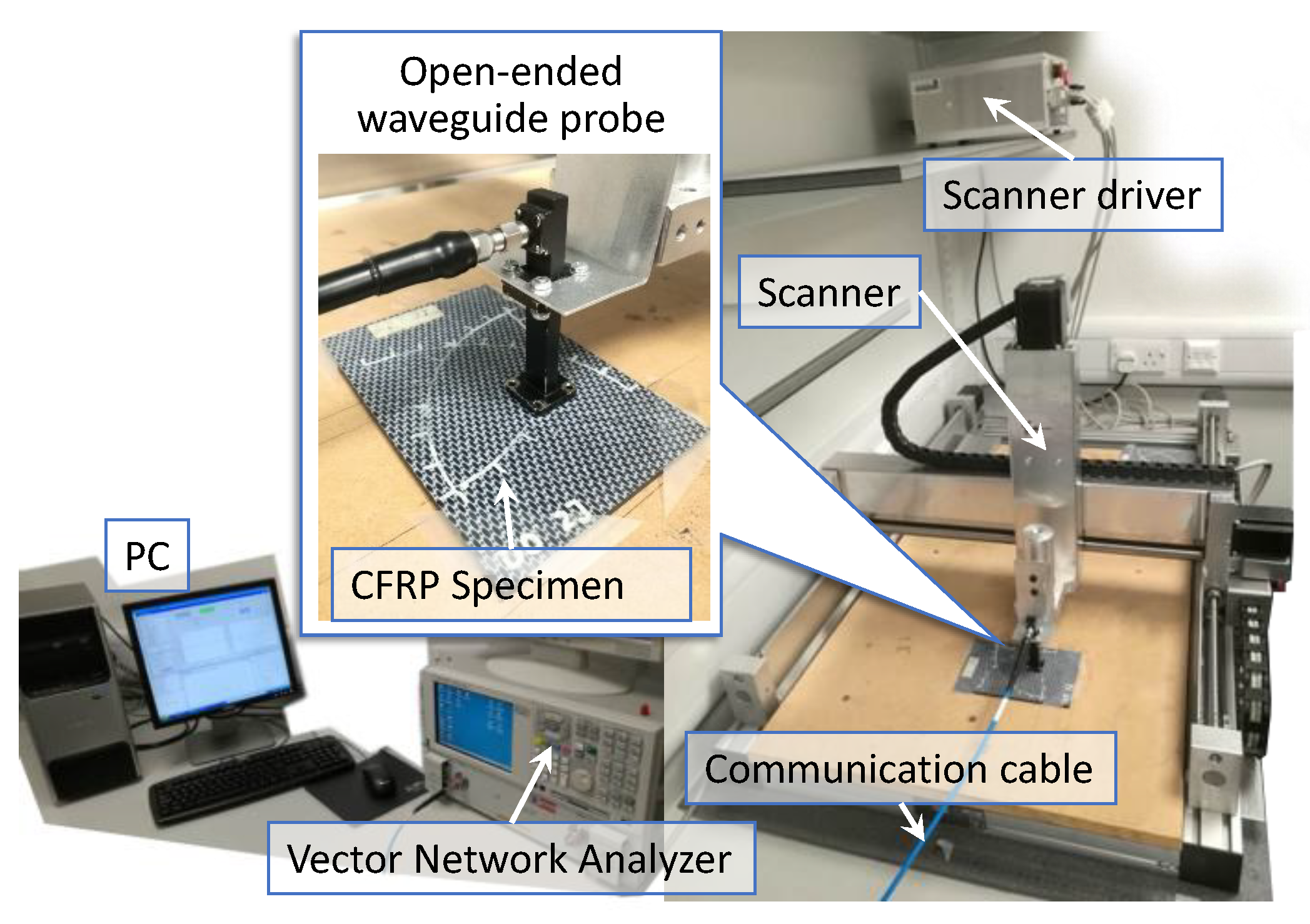

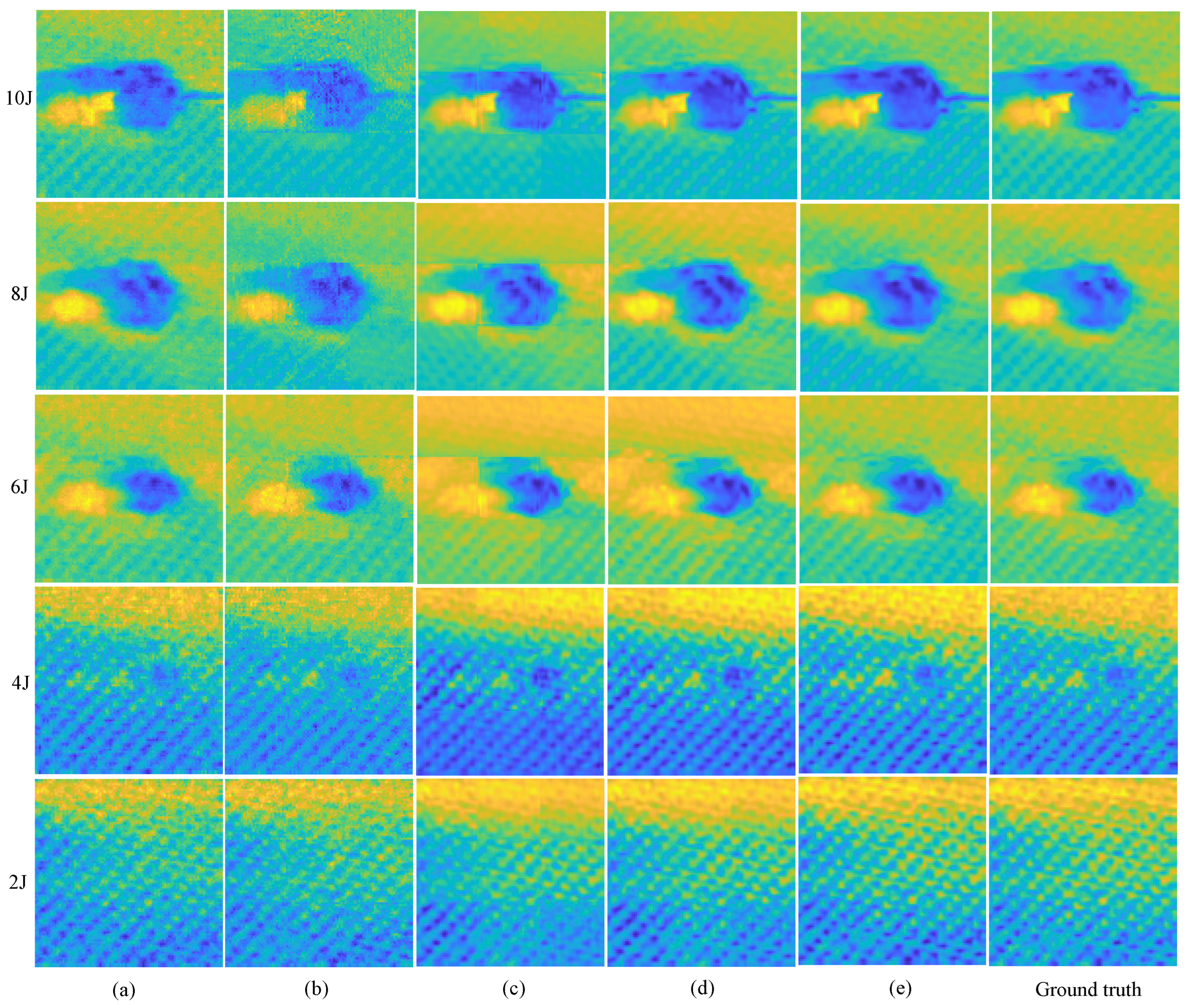
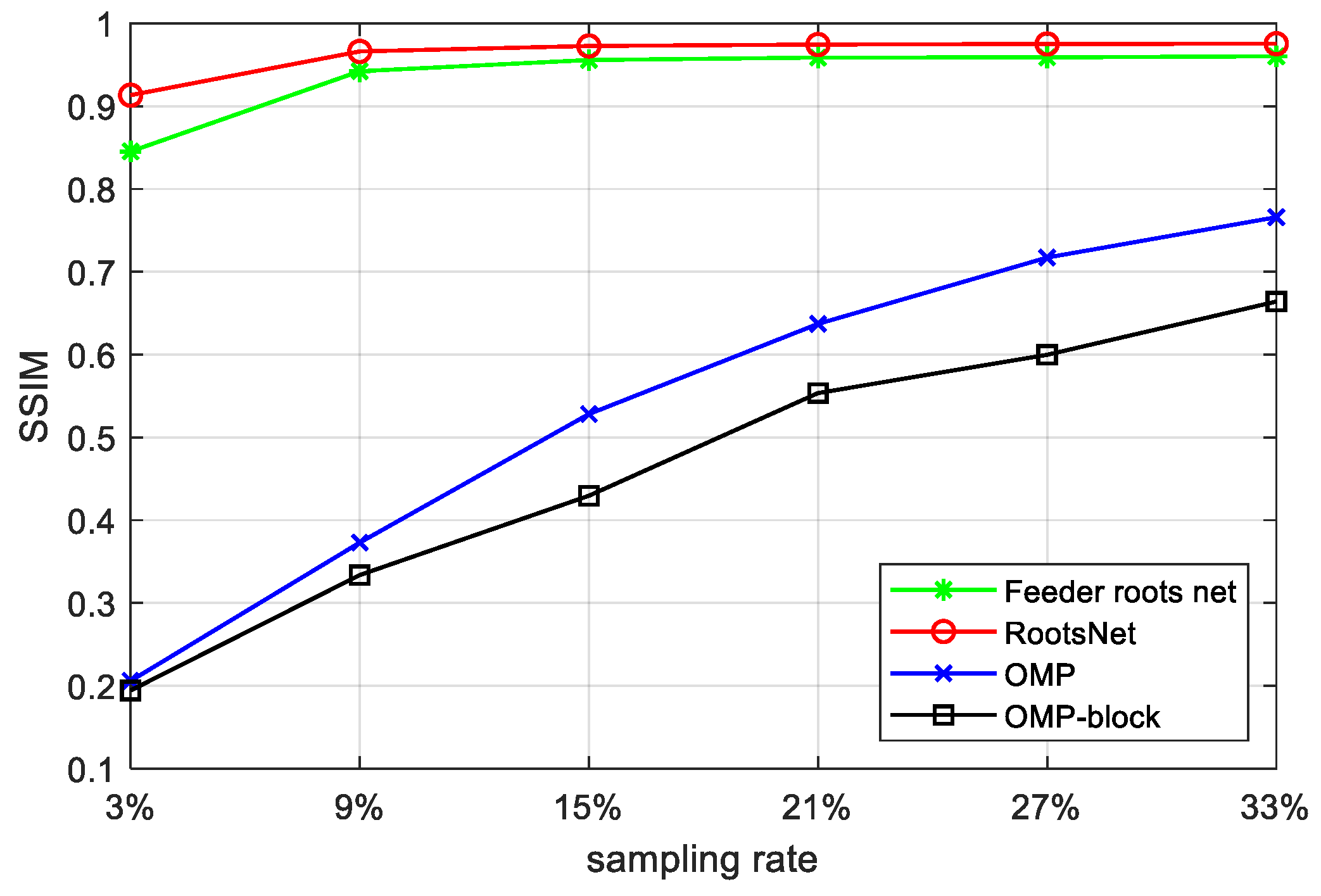


| SR | 3% | 9% | 15% | 21% | 27% | 33% | |
|---|---|---|---|---|---|---|---|
| Method | |||||||
| OMP | 0.52 | 8.74 | 50.54 | 196.42 | 628.57 | 1445.63 | |
| Block OMP | 0.09 | 0.74 | 1.68 | 3.63 | 6.24 | 11.50 | |
| Block SFAR-2D | 0.07 | 0.63 | 1.22 | 2.92 | 5.21 | 8.69 | |
| RootsNet | 0.42 | 0.42 | 0.43 | 0.43 | 0.43 | 0.44 | |
| SR | 3% | 9% | 15% | 21% | 27% | 33% | |
|---|---|---|---|---|---|---|---|
| Method | |||||||
| Raster scan | 304.2/0.03 | 917.3/0.09 | 1531.2/0.15 | 2137.4/0.21 | 2746.8/0.27 | 3352.2/0.33 | |
| OMP | 305.72/0.21 | 926.04/0.37 | 1581.74/0.53 | 2333.82/0.63 | 3375.37/0.72 | 4797.83/0.77 | |
| Block OMP | 304.29/0.19 | 918.04/0.33 | 1532.88/0.43 | 2141.03/0.55 | 2753.04/0.60 | 3363.70/0.66 | |
| Block SFAR-2D | 304.27/0.21 | 917.93/0.35 | 1532.42/0.52 | 2140.32/0.64 | 2752.01/0.73 | 3360.89/0.77 | |
| RootsNet | 304.62/0.91 | 917.72/0.96 | 1531.63/0.97 | 2137.83/0.97 | 2747.23/0.97 | 3352.64/0.98 | |
Publisher’s Note: MDPI stays neutral with regard to jurisdictional claims in published maps and institutional affiliations. |
© 2022 by the authors. Licensee MDPI, Basel, Switzerland. This article is an open access article distributed under the terms and conditions of the Creative Commons Attribution (CC BY) license (https://creativecommons.org/licenses/by/4.0/).
Share and Cite
Song, H.; Wang, Z.; Zeng, Y.; Guo, X.; Tang, C. Efficient Near-Field Radiofrequency Imaging of Impact Damage on CFRP Materials with Learning-Based Compressed Sensing. Materials 2022, 15, 5874. https://doi.org/10.3390/ma15175874
Song H, Wang Z, Zeng Y, Guo X, Tang C. Efficient Near-Field Radiofrequency Imaging of Impact Damage on CFRP Materials with Learning-Based Compressed Sensing. Materials. 2022; 15(17):5874. https://doi.org/10.3390/ma15175874
Chicago/Turabian StyleSong, Huadong, Zijun Wang, Yanli Zeng, Xiaoting Guo, and Chaoqing Tang. 2022. "Efficient Near-Field Radiofrequency Imaging of Impact Damage on CFRP Materials with Learning-Based Compressed Sensing" Materials 15, no. 17: 5874. https://doi.org/10.3390/ma15175874
APA StyleSong, H., Wang, Z., Zeng, Y., Guo, X., & Tang, C. (2022). Efficient Near-Field Radiofrequency Imaging of Impact Damage on CFRP Materials with Learning-Based Compressed Sensing. Materials, 15(17), 5874. https://doi.org/10.3390/ma15175874





